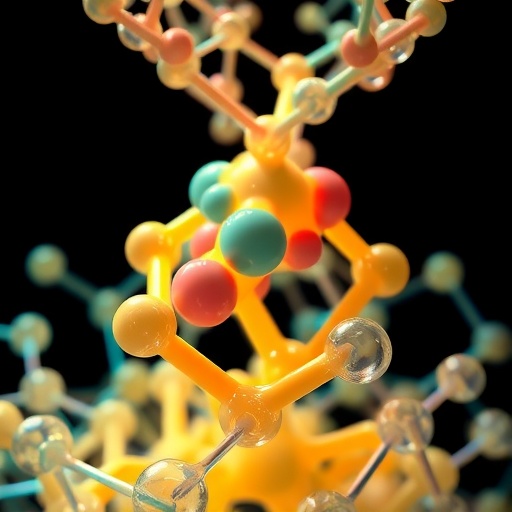In recent years, deep learning has emerged as a transformative force within the field of chemical research. By streamlining the discovery process and enhancing our understanding of the intricate behaviors of chemical systems, this technology is reshaping conventional methodologies. Nonetheless, the realm of polymer chemistry remains notably underserved by a unified deep learning framework. This gap can be largely attributed to the fundamental complexity associated with polymer structures, which often exhibit unique characteristics that complicate their representation in machine learning models.
The reliance on traditional machine learning techniques, including existing self-supervised learning methods, has often led to simplifications of polymer structures into mere repeating units. This approach overlooks the inherent periodicity and complexity that define these materials, resulting in models that struggle to generalize effectively across various tasks. The limitations of such models have prompted researchers to rethink the strategies employed in the field. It is against this backdrop that a novel concept has emerged — a periodicity-aware deep learning framework designed specifically for the distinctive challenges posed by polymers.
The innovative framework, known as PerioGT, is at the forefront of this new approach to polymer research. At its core, PerioGT integrates a construction of chemical knowledge-driven periodicity priors into its architecture. This prior is pivotal, as it serves as the backbone of the model, facilitating a deeper understanding of how periodicity influences polymer behavior and properties. Moreover, the incorporation of such a prior is accomplished through the use of contrastive learning techniques. By emphasizing the periodic nature of polymers during pre-training, the model is better equipped to interpret and analyze complex relationships inherent in polymeric systems.
In the subsequent fine-tuning phase of model development, PerioGT goes a step further by learning periodicity prompts based on the established prior. This learning process enhances the model’s ability to focus on the periodic attributes that impact polymer functionality while simultaneously addressing the nuances of polymer structures. Apart from these technical advancements, the framework employs an innovative graph augmentation strategy. By utilizing virtual nodes, the model can effectively integrate additional conditions, thereby improving its capacity to model complex chemical interactions that are often present in real-world applications.
The results achieved by PerioGT are nothing short of impressive. In benchmarking tests across 16 different downstream tasks, the model has consistently showcased state-of-the-art performance, outperforming existing models in various scenarios. It is noteworthy that these achievements do not solely reside within theoretical computations; wet-lab experiments have also underscored PerioGT’s real-world applicability. In practical applications, the framework successfully identified two novel polymers exhibiting potent antimicrobial properties, highlighting its potential impact on material science and biotechnology.
The implications of introducing a periodicity prior into deep learning models extend beyond mere performance metrics. By enhancing the model’s ability to generalize across tasks and readily adapt to different polymeric structures, researchers are better equipped to explore the vast landscape of polymer chemistry. This holistic approach not only facilitates faster discoveries but also holds promise for advancing the development of new materials tailored for specific applications, including but not limited to medical devices, sustainable packaging, and advanced composites.
While the integration of periodicity in deep learning models constitutes a significant step forward, it also raises further questions about the future of polymer research. Researchers are now presented with a framework capable of generating insights that were previously unattainable due to the limitations of traditional methods. As the PerioGT framework is refined and its applications broadened, one can expect an influx of groundbreaking research emerging from this new paradigm, leading to remarkable discoveries in polymer chemistry.
Furthermore, the trends in research methodologies indicated by PerioGT suggest that collaboration between computational techniques and experimental approaches will become increasingly essential. Researchers must unite their efforts to fully harness the potential of advanced machine learning, ensuring that theoretical models are continually validated and informed by empirical data. In this regard, the research community is poised to witness a new era where computational strength amplifies the capabilities of experimental chemistry.
In summary, the advent of PerioGT marks a pivotal moment in polymer chemistry, where deep learning meets the complexity of polymer structures with unprecedented effectiveness. As researchers continue to explore the capabilities offered by periodicity-aware models, we can anticipate an era where the exploration of polymers yields innovative materials with transformative properties. The intersection of deep learning and polymer research not only underscores the immense potential of these technologies but also illuminates the path towards a future enriched by advanced materials designed to address the challenges of modern society.
In conclusion, the work being done with PerioGT serves as a testament to the transformative power of deep learning in chemical research. Through the incorporation of a knowledge-driven periodicity prior, the model significantly advances our understanding of polymers and their wide-ranging implications. As this framework continues to evolve, the scientific community can expect to forge new pathways in material science that will pave the way for innovations that resonate across multiple industries and applications.
Subject of Research: Deep learning application in polymer chemistry through periodicity awareness.
Article Title: Periodicity-aware deep learning for polymers.
Article References:
Wu, Y., Wang, C., Shen, X. et al. Periodicity-aware deep learning for polymers. Nat Comput Sci (2025). https://doi.org/10.1038/s43588-025-00903-9
Image Credits: AI Generated
DOI: https://doi.org/10.1038/s43588-025-00903-9
Keywords: Deep learning, polymer chemistry, periodicity, self-supervised learning, chemical interactions, advanced materials.




